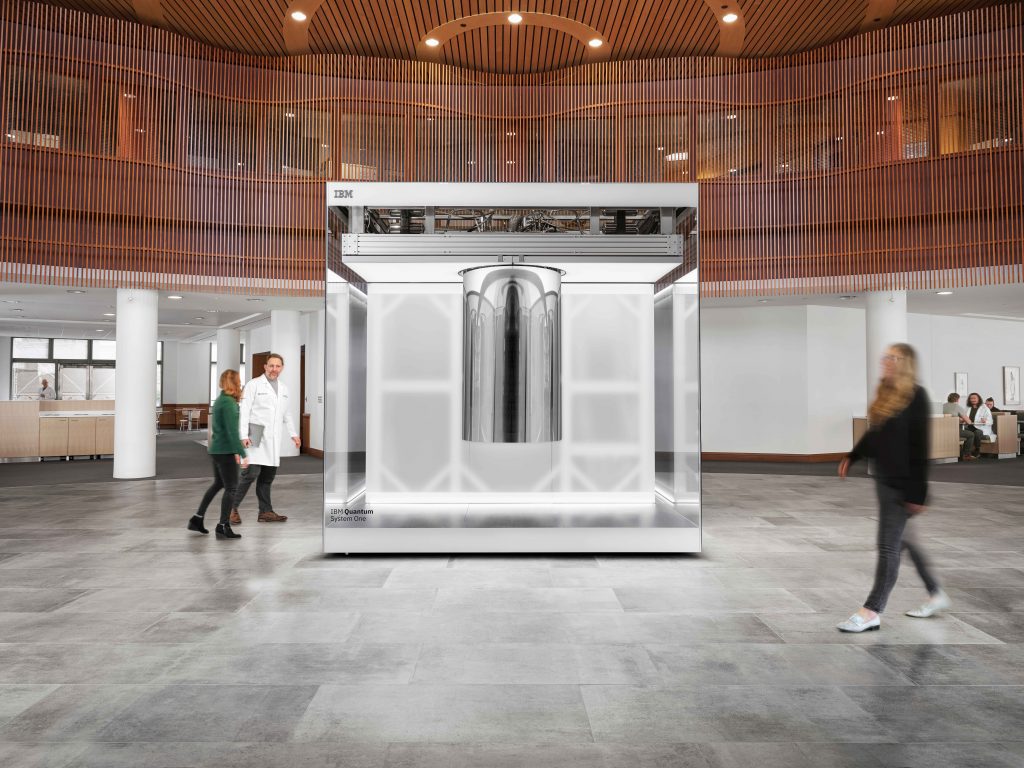Healthcare is one of the biggest industries that quantum computing is predicted to transform. From drug discovery to patient trial simulations to advanced cybersecurity of patient records, quantum computing can be applied in many different areas of this field. IBM has moved towards these advancements by installing the first on-site quantum computer, IBM Quantum System One, at the Cleveland Clinic. “The IBM Quantum System One, now fully up and running on Cleveland Clinic’s main campus, is the first private and on-site IBM quantum computer in the United States, and the first quantum computer uniquely dedicated to healthcare and life sciences (HCLS) research,” explained Jeannette Garcia, Senior Research Manager of Quantum Computational Science at IBM. “As part of our ten-year partnership, we are working with Cleveland Clinic to harness the potential of the IBM Quantum System One to accelerate scientific discovery.”
Advancing Research at the Cleveland Clinic
IBM’s new system offers significant advancements for those at the Cleveland Clinic working on cutting-edge healthcare research. “Our work together with Cleveland Clinic is now underway, and we are exploring how we can tap into the power of quantum computing to expedite discoveries in HCLS research,” Garcia stated. “This includes using quantum machine learning to design more efficient immunotherapies and designing quantum-accelerated models to predict drug combinations. This is just the start, and we look forward to identifying more promising areas to apply quantum computing as our collaboration with Cleveland Clinic grows while quantum technology simultaneously matures.” Because the Cleveland Clinic is a leading healthcare facility in the U.S. focused on exploring new cures, IBM’s Quantum System One is the perfect tool to utilize in their endeavors.
For its part, IBM is excited to see its new system solving essential use cases in real-time. “Quantum computing harnesses the properties of quantum mechanics to open entirely new and large computational spaces for those tapping into it,” Garcia stated. “This offers the potential for our partners, such as Cleveland Clinic, to solve some of today’s most intractable challenges that classical supercomputers cannot practically solve and never will. The 127-quantum bit (qubit) IBM Eagle processor is powering this system, the first quantum processor in which quantum circuits that cannot be reliably simulated exactly on a classical computer can be researched.”
The Cleveland Clinic also plans to share this new system with those beyond the partnership, allowing others to utilize IBM’s next-generation technology. Dr. Lara Jehi, the Chief Research Information Officer at the Cleveland Clinic, explained, “A significant part of the collaboration is a focus on educating the workforce of the future and creating jobs to grow the economy. An innovative educational curriculum has been designed for participants from high school to the professional level, offering training and certification programs in data science, machine learning, and quantum computing to build the skilled workforce needed for cutting-edge computational research of the future. Additionally, the two organizations are hosting research symposia, seminars, and workshops intended for academia, industry, government, and the public with a goal of building a critical mass of computing specialists in Cleveland.”
Kenna Hughes-Castleberry is a staff writer at Inside Quantum Technology and the Science Communicator at JILA (a partnership between the University of Colorado Boulder and NIST). Her writing beats include deep tech, the metaverse, and quantum technology.
